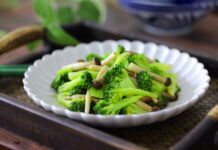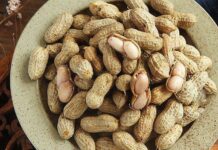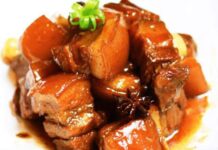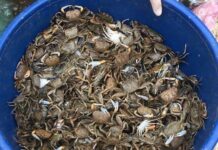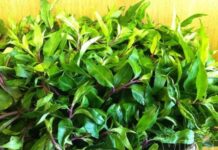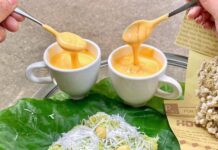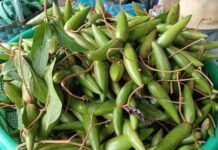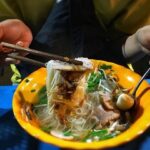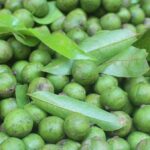The Mystery of the Seven Mountains Cicada: A Seasonal Delicacy
The Seven Mountains Cicada, also known as the ‘bu ray’, is a unique insect with a soft, round body, setting it apart from other insects with their sharp and spiky appearances. Unlike its counterparts, this cicada does not chew or destroy crops; instead, it feeds on young shoots. Over time, as locals discovered its culinary value, the perception of this insect changed, and it became a sought-after delicacy.
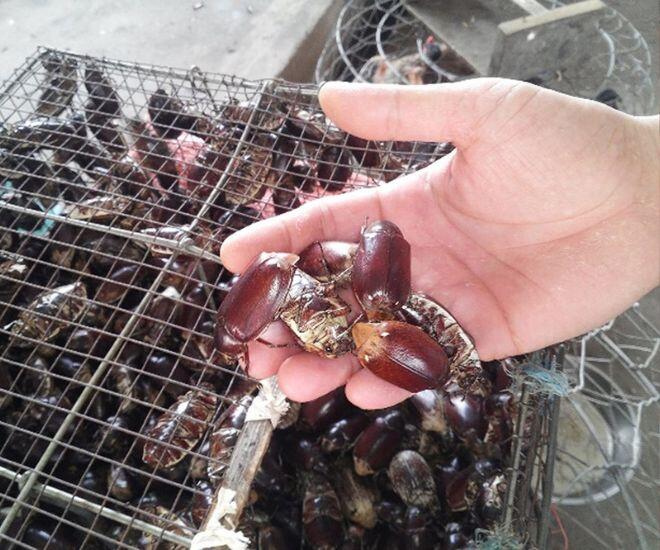
The Seven Mountains Cicada thrives during the rainy season, which typically lasts from May to November each year in the Seven Mountains region of An Giang Province. This period offers the perfect opportunity for visitors to witness and indulge in this delicacy at its freshest. Hunting for these cicadas is not overly complicated once you understand their behavior. After heavy rainfall, they tend to emerge from the soil and settle on tree canopies. Locals gently tap the tree trunks with sticks, causing the insects to fall into baskets. Interestingly, hunting becomes even easier at night. Simply hang a bright lamp under a mango tree, and the light will attract swarms of cicadas, making collection convenient as they gather on the ground.
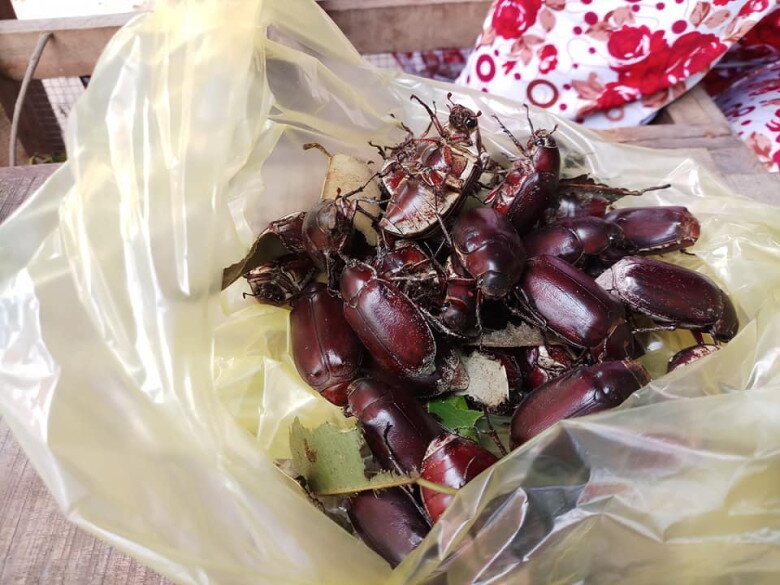
Due to their seasonal nature and the fact that hunting them is not entirely straightforward, these cicadas command a high price, typically around 300,000 VND per kilogram for fresh specimens. Prepared dishes in restaurants or eateries can be even more expensive. Therefore, visiting An Giang during cicada season not only ensures a fresh culinary experience but also offers the opportunity to purchase this delicacy at a more reasonable price.
From a “Poor Man’s Meal” to a Unique Delicacy
In the past, dishes made from Seven Mountains Cicadas were considered a staple for the region’s impoverished locals. However, over time, with creativity and culinary expertise, these insects underwent a remarkable transformation. They are now a renowned specialty, proudly featured on the menus of pubs, restaurants, and eateries throughout An Giang. Among these dishes, the star attraction is the crispy-fried Seven Mountains Cicada.
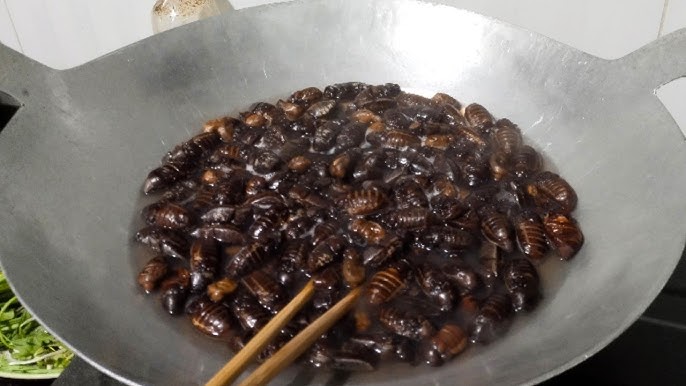
To prepare this dish to perfection, meticulous cleaning and preparation are essential. Once harvested, the cicadas’ legs are removed, and their insides are cleaned. Skilled chefs often keep the creamy eggs inside, as they contribute to the dish’s irresistible flavor. The insects are then carefully scalded to remove impurities and soaked in salt water multiple times to ensure cleanliness and eliminate any unpleasant odors.
Next, the cleaned cicadas are marinated with familiar spices like pepper, garlic, chili, and sugar for about 15 minutes to absorb the flavors. Once the oil is hot enough, the cicadas are deep-fried until they turn a golden brown, emitting an irresistible aroma.
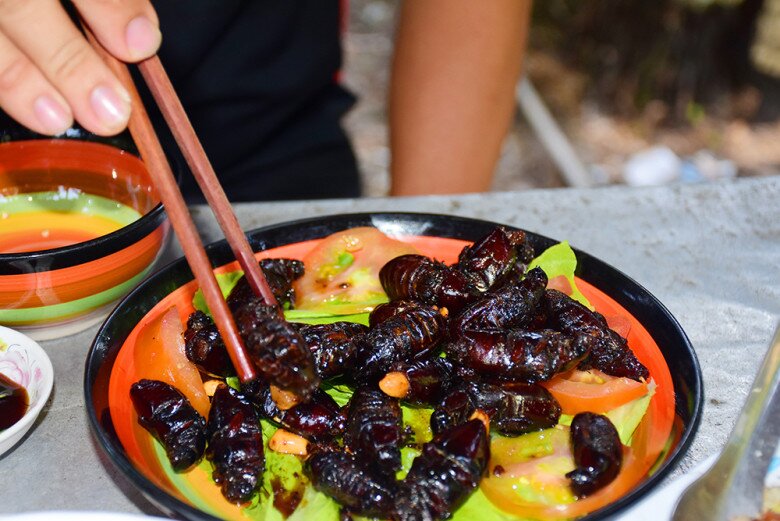
To enhance the dining experience, the crispy-fried cicadas are typically served with a sour mango fish sauce dip. This dip is made from extremely sour mangoes and a blend of spices, creating a harmonious combination of sour, spicy, salty, and sweet flavors that perfectly complement the rich, buttery taste of the cicadas. Fresh vegetables like cucumbers and tomatoes are also served on the side to provide a refreshing contrast.
The Addictive Flavor of Seven Mountains Cicada
Like the Seven Mountains Scorpion, this delicacy may initially evoke a sense of unease among first-time diners due to the insect’s distinctive appearance. However, once you overcome this initial hesitation and take that first bite, you’ll be captivated by its unique and unforgettable flavor.
The fried cicada offers a buttery, nutty taste, beautifully complemented by the sour, mildly spicy, salty, and sweet flavors of the mango fish sauce dip. This combination creates a captivating symphony of flavors that leaves a lasting impression, enticing diners to crave more. Many have become addicted to this dish after just a few tastings.

The Seven Mountains Cicada, despite its humble beginnings as a tiny insect, has been elevated to a unique delicacy thanks to the creativity and culinary prowess of the locals. It has become more than just a culinary experience; it represents a cultural transformation, showcasing the ability to turn the ordinary and seemingly harmful into something extraordinary and distinctive to the region.
If you ever find yourself in the mystical land of the Seven Mountains, don’t hesitate to venture into local eateries and discover the captivating flavors of this delicacy. It will undoubtedly be a memorable culinary journey that will leave a lasting impression long after you’ve left An Giang.
The Ultimate Quest for Saigon’s Iconic ‘Hu Tieu Go’: Unveiling the Secret to 250 Bowls Sold Nightly
For an authentic and delectable experience of Hu Tieu Go, seek out the renowned street-side stalls and humble vendors. These unsung heroes of Vietnamese cuisine offer a taste sensation that is truly exceptional. With every bowl, they serve up a hearty helping of tradition and a generous dash of passion, ensuring a memorable dining encounter.
“A Seasonal Delicacy in Hanoi: The Tangy Treat That’s a Symbol of Young Love”
The Hanoi Delicacy: A Summer Essential
This exquisite fruit is a specialty of Hanoi and a summer staple. Its versatility is remarkable – it can be enjoyed fresh, crafted into a delicious drink, or transformed into a culinary ingredient, adding a unique twist to any dish. A true taste of summer, it delights the senses with its refreshing aroma and flavor.
A Culinary Journey: Over 300 Creative Breakfast Dishes Featuring California Dried Plums
The culinary competition, “California Raisins: The Sweet, Savory, and Sensational Multi-Z-Talent,” has concluded after an impressive three-month journey, yielding over 300 unique dishes. California Raisins proved to be a versatile ingredient, showcasing its ability to transcend beyond sweet treats and seamlessly blend with savory and liquid creations, becoming the secret ingredient in countless culinary masterpieces.
The Midnight Harvest: A Delicate Delicacy Illuminated.
After the sun sets, the locals in the western provinces of Vietnam embark on a unique nocturnal endeavor. They gather in groups and venture out into the night to forage for a delicacy known as “mushroom termite.” These prized fungi, sprouting from termite mounds, are sought-after ingredients for upscale restaurants and gourmet chefs. The locals’ nocturnal expeditions are not merely recreational; they are a means to earn a substantial income by supplying this exotic ingredient to discerning chefs and gourmet enthusiasts.











